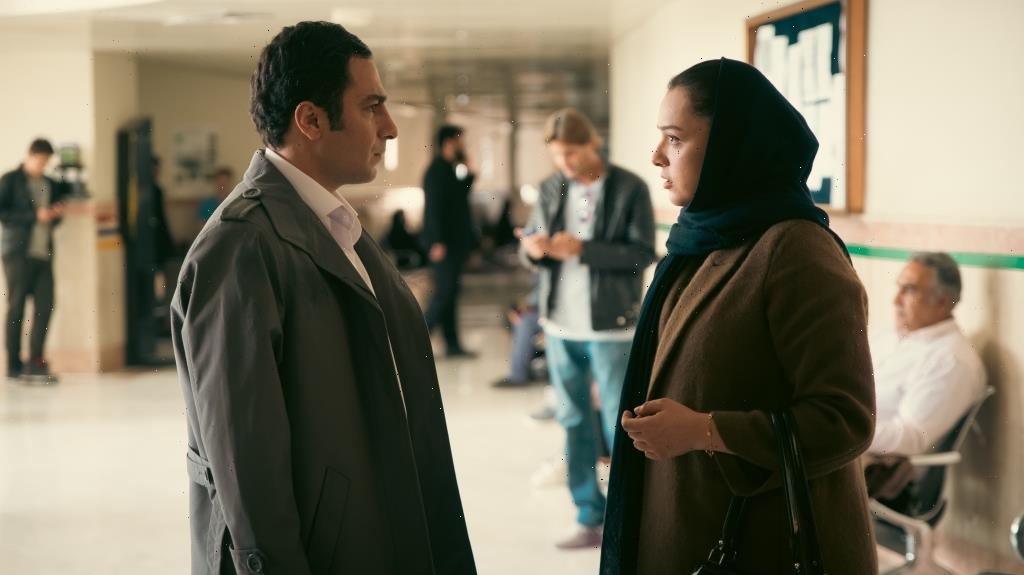Overline:
Hed:
By Alissa Simon
“Subtraction,” from idiosyncratic Iranian helmer-writer Mani Haghighi (“Men at Work,” “Modest Reception,” “A Dragon Arrives!”) is a tense Hitchcockian thriller set in Tehran, where a heavy, non-stop rainfall signals a lingering malaise. There, a young couple come across their doppelgängers. The film premiered at the Toronto festival.
The idea for the plot grew out of the helmer’s long-ago trip to Southwest Iran to look at places where the Iran-Iraq war took place.
“It was a hot summer day and I wandered into a local mosque to cool down and get some rest,” Haghighi says. “The people who ran the mosque had put on an exhibition of photographs from the war years. I was casually looking at these pictures and I was suddenly transfixed by one of them. It was a picture of me, in military uniform, badly wounded in the neck, being carried by two other soldiers. As one of the characters says in ‘Subtraction,’ ‘It’s not like he looked like me, he was my absolute clone!’ I was so confused that I asked others to verify what I was seeing, and everybody was sure it was a picture of me, except that, at the time of the war, I was much younger than the man in the picture, I was just a 10-year-old kid. It was dreadful and completely uncanny, and it was a very familiar kind of dread: it reminded me of how it feels to live in Tehran, where you are constantly coming face-to-face with events that seem completely unreasonable to you, every day, everywhere, and yet you are supposed to live with them and tolerate them and pretend they are normal.”
The plot centers on two actors, each playing two parts. Haghighi cast Taraneh Alidoosti and Navid Mohammadzadeh, two of Iran’s biggest stars. He notes, “My primary reason for choosing them was that they are very kind and uncomplicated people, very easy to get close to and spend time with. My rehearsal process usually takes a long time. I write my final draft after I cast the film and I rewrite the script extensively for the specific actors I’ve chosen. So it’s not enough for them to be good actors. They need to be easy to spend time with and be friends with. And these guys are.”
One might think that developing and differentiating their two characters would be quite difficult, but Haghighi disagrees. “I was adamant that this should not be their concern, because I knew the plot and the specific dramatic situations would take care of that problem,” he says. “I didn’t want them to look for a certain tic, or a certain way the character walks, or a particular tone of voice. I asked them to think about the problems each character faces, how they react to the problem, and the decision they make about it. The script, the makeup and the costume design would take care of the rest. Once I managed to convince the actors of this, everything became easy and relaxed and kind of old school: What is the problem? How does it make you feel? What are you going to do about it?”
Haghighi, who also works as an actor, was born in a family that works and creates art. His mother is a gallery owner and his father a cinematographer. His grandfather is the renowned filmmaker Ebrahim Golestan and his uncle, the photojournalist Kaveh Golestan.
Like the work of Iranian New Wave director Dariush Mehrjui, about whom he has made two documentaries, Haghighi’s films are all very different from one another, yet they bear his subtle, ineffable signature. “Most directors in my generation in Iran are terrified of tarnishing their brand, and they keep making the same film over and over again. I can’t imagine how they can survive the boredom,” he says.
Although all of Haghighi’s films take place in Iran, his Iranian-Canadian identity is very important to him. “I went to high school and university in Ontario, I married and divorced there, and some of my closest friends live and work there and I’m in daily contact with them. I also studied philosophy in Canada, and some of the people who taught me have been huge cinematic influences, in a roundabout but important way,” he says.
Haghighi’s first experience of TIFF came in 1984, age 15, where he saw two films that blew him away: “Boy Meets Girl” by Leos Carax and “Blood Simple” by the Coen brothers. “I already knew I wanted to be a filmmaker back then, but I resolved to premiere my films in Toronto when the time came. And it’s kind of astonishing and totally wonderful that I finally get to do this, nearly 40 years later,” he says.
The film has been acquired by Diaphana in France (in association with Kinovista) and September Films in Benelux. Jean-Christophe Simon’s Berlin-based outfit Films Boutique co-produced “Subtraction” and is representing the movie in international markets.
Read More About:
Source: Read Full Article
